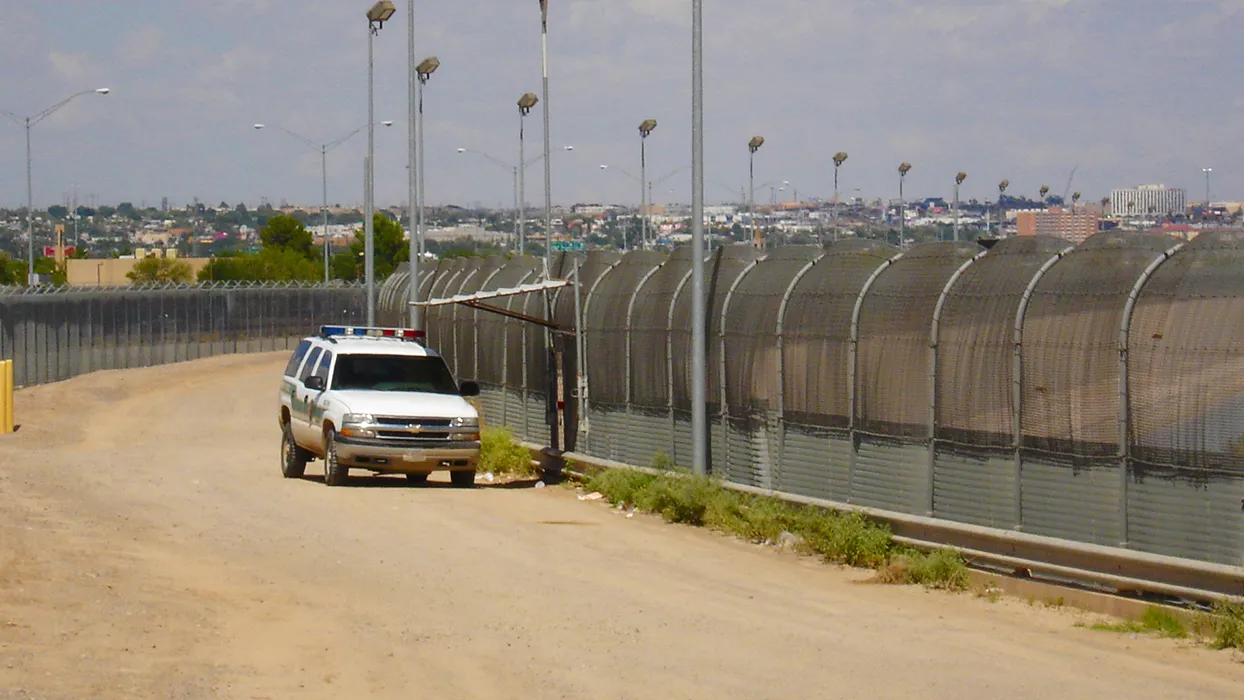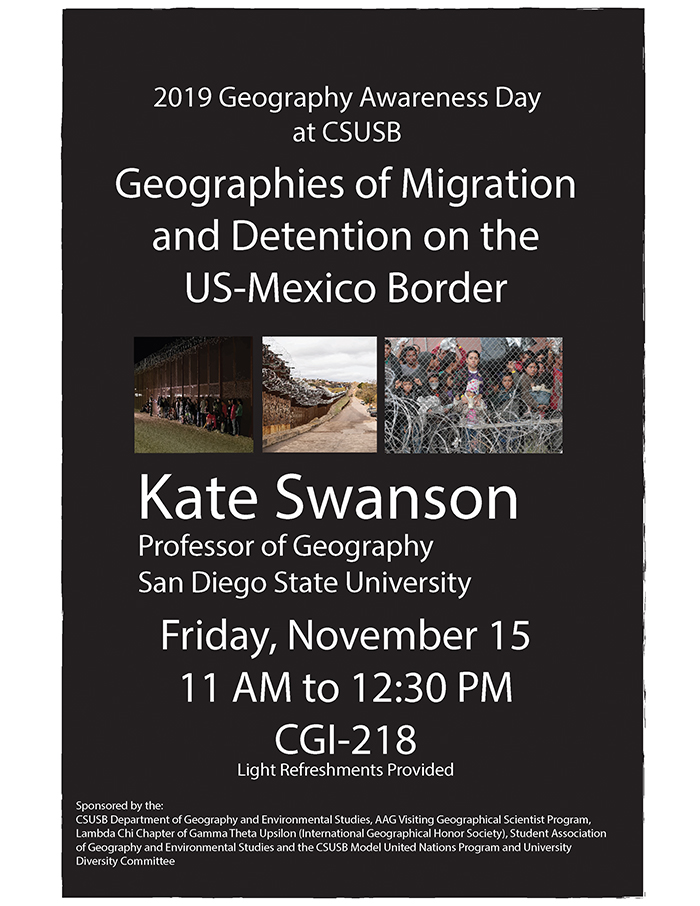Joe Gutierrez Office of Strategic Communication (909) 537-5007 joeg@csusb.edu

The complexities of migration and detention at the U.S.-Mexico border will be the focus of a talk at Cal State San Bernardino as part of Geography Awareness Week, the annual celebration of geography and the role it plays in our lives.
“Geographies of Migration and Detention on the U.S.-Mexico Border,” presented by Kate Swanson, professor of geography at San Diego State, is scheduled for Friday, Nov. 15, from 11 a.m.-12:30 p.m. in the Center for Global Innovation building, room CGI-128.
Nov. 12-18 is Geography Awareness Week, established by a presidential proclamation in 1987 to take place the third week in November each year. This year, according to the American Association of Geographers, the theme “has been designated ‘The Geography of Civil Rights Movements.’ [This will] empower educators to shed light on the historical and contemporary struggles of historically disenfranchised groups who have faced and fought discrimination on the basis of age, class, disability, ethnicity, gender, national origin, race, religion, sexual orientation, etc.”
In keeping with the theme, Swanson’s talk will focus on the migration of people from Latin America and what drives them to leave their homeland for the United States. According to the talk’s abstract, “In our current political context, migrants and asylum seekers are often cast as dangerous threats to national security. Meanwhile, U.S. immigration detention has become a multibillion-dollar industry that profits from the incarceration of asylum seekers.”
Swanson wrote: “Drawing from many years of experience working with migrant children and adults in US immigration detention, I argue that we must move beyond shallow understandings of the perceived crisis at our border. Rather, we need a historically deep and geographically broad analysis in order to understand why so many people are fleeing Central America and beyond to request asylum in the United States. In this presentation, I draw from children’s stories and artwork to share perceptions of migration and immigration detention. I also pull from an archival collection of letters from detention to provide rare insight into the lives of detained migrants and asylum-seekers incarcerated in the United States.”
Swanson’s research interests include critical human geography and she currently focuses on youth migration in Latin America and the U.S./Mexico border region. She has worked extensively with migrants in Mexican and American immigration detention centers. Her research explores issues surrounding youth, rights, inequality, violence and poverty.
Her geographic focus is also broad and she has undertaken field research in Honduras, Mexico and Ecuador, as well as China, Vietnam and Scotland. Swanson is the author of three books, including “Begging as a Path to Progress: Indigenous Women and Children and the Struggle for Ecuador’s Urban Spaces,” (University of Georgia Press, 2010).
Swanson earned her doctorate in geography from the University of Toronto; her master’s degree in geography from the University of Guelph, Canada; and her bachelor of arts in geography and international development also from the University of Guelph.
“Geographies of Migration and Detention on the U.S.-Mexico Border” is being cosponsored by the American Association of Geographers Visiting Geographical Scientist Program, CSUSB Department of Geography and Environmental Studies, the Lambda Chi Chapter of Gamma Theta Upsilon (International Geographical Honor Society), Student Association of Geography and Environmental Studies (SAGES), the CSUSB Model United Nations Program and the University Diversity Committee.
For more information, contact Kevin Grisham, chair of the CSUSB Department of Geography and Environmental Studies, at KGrisham@csusb.edu, or Michal Kohout, professor of geography, at mkohout@csusb.edu.
